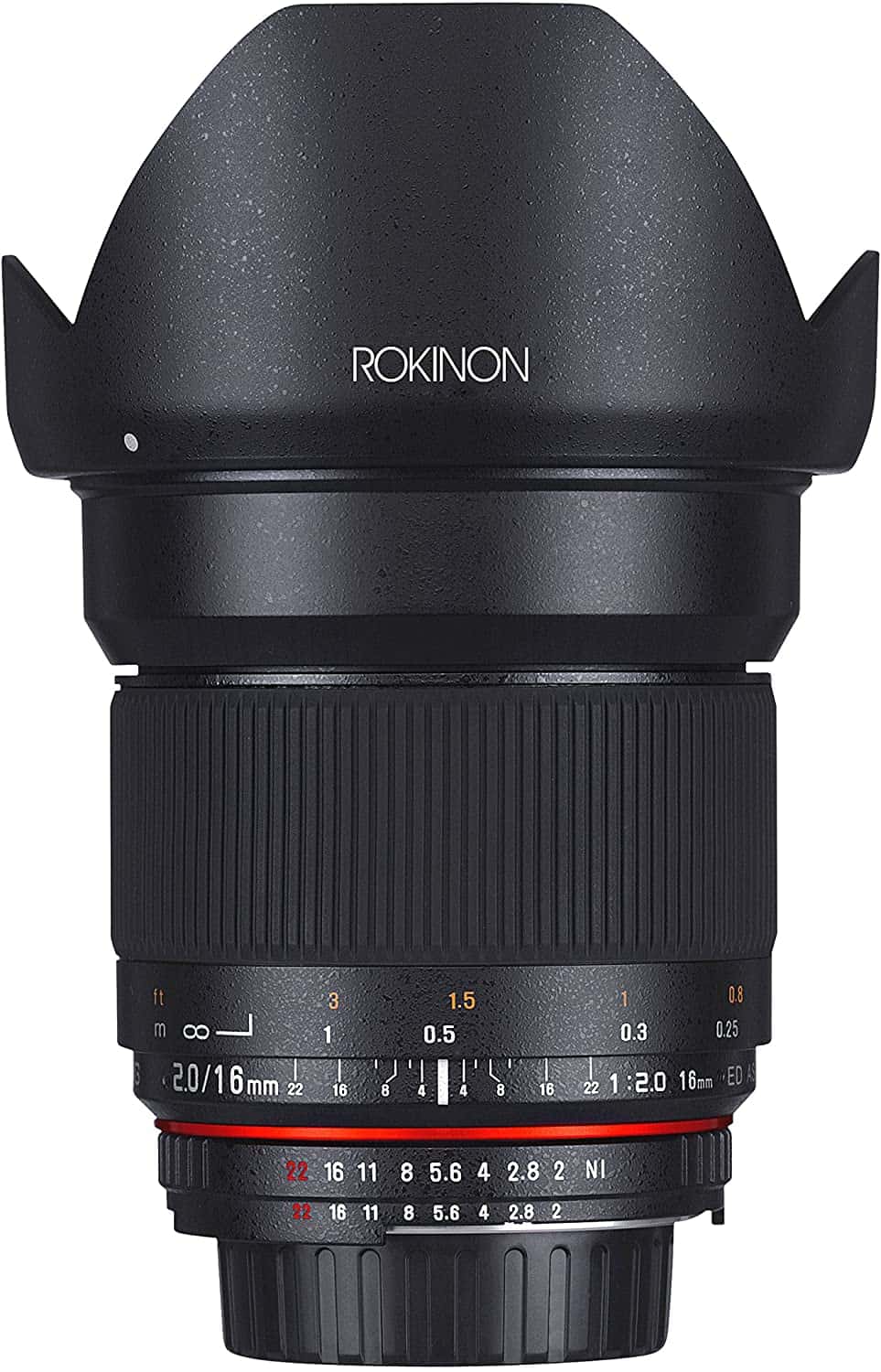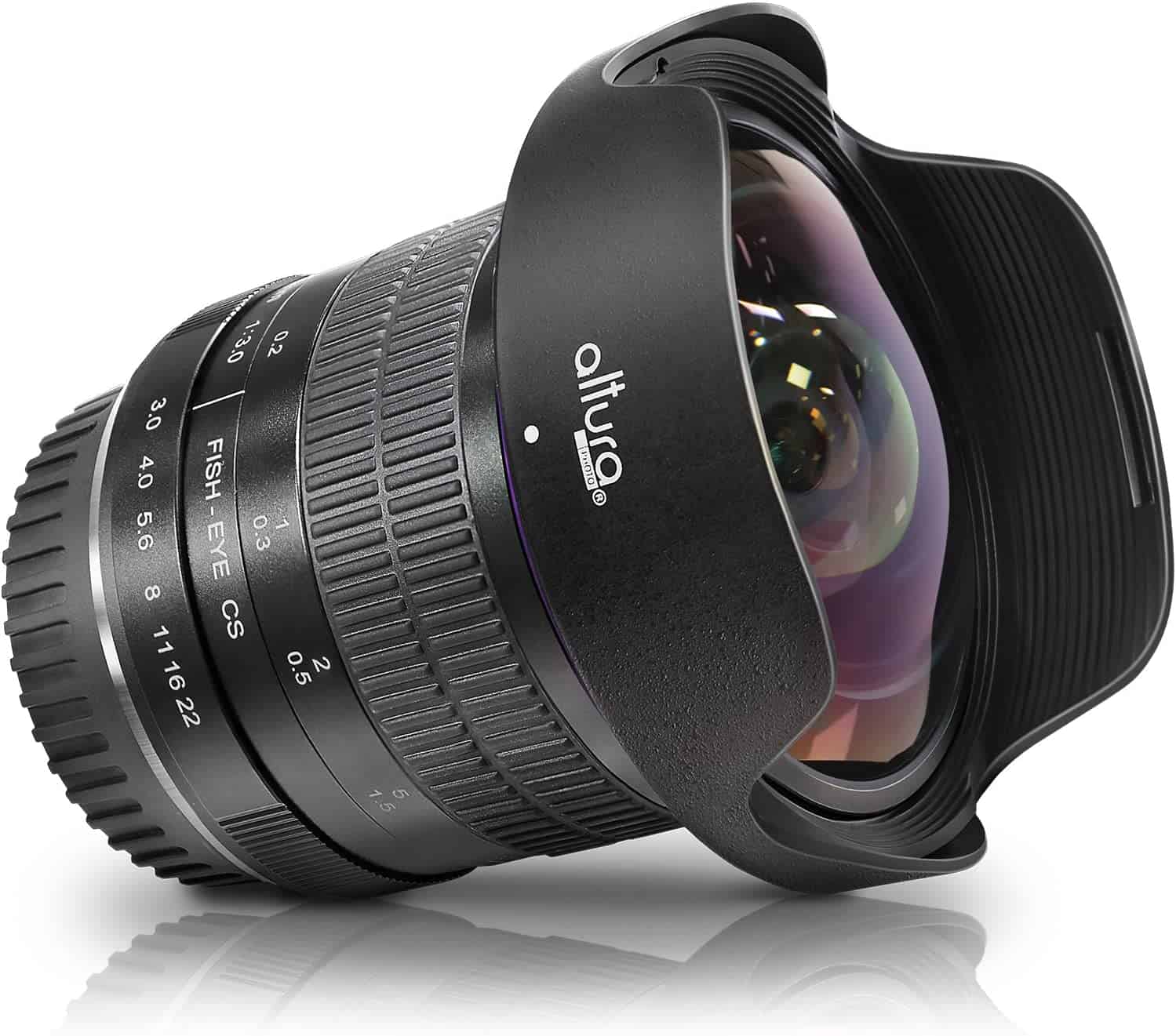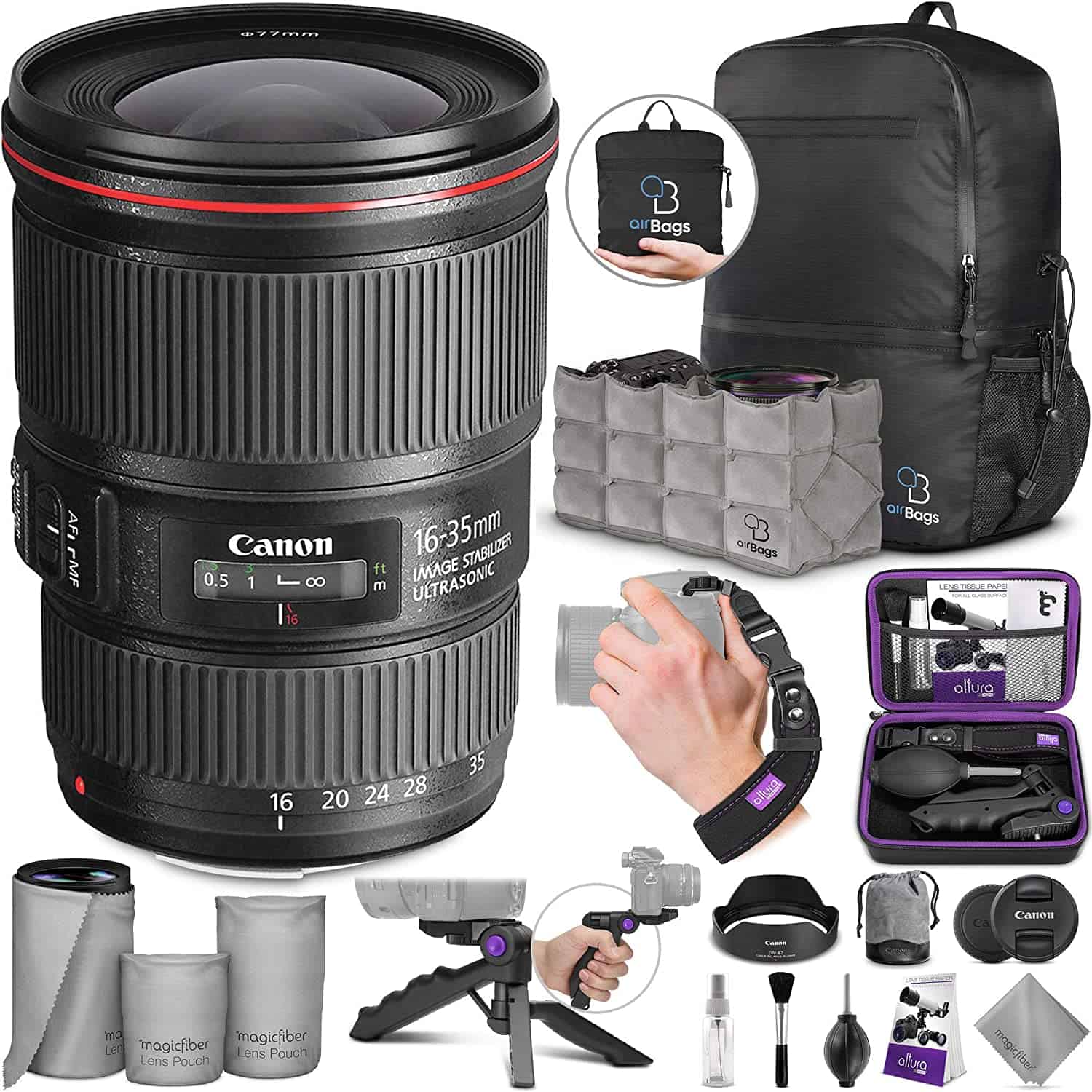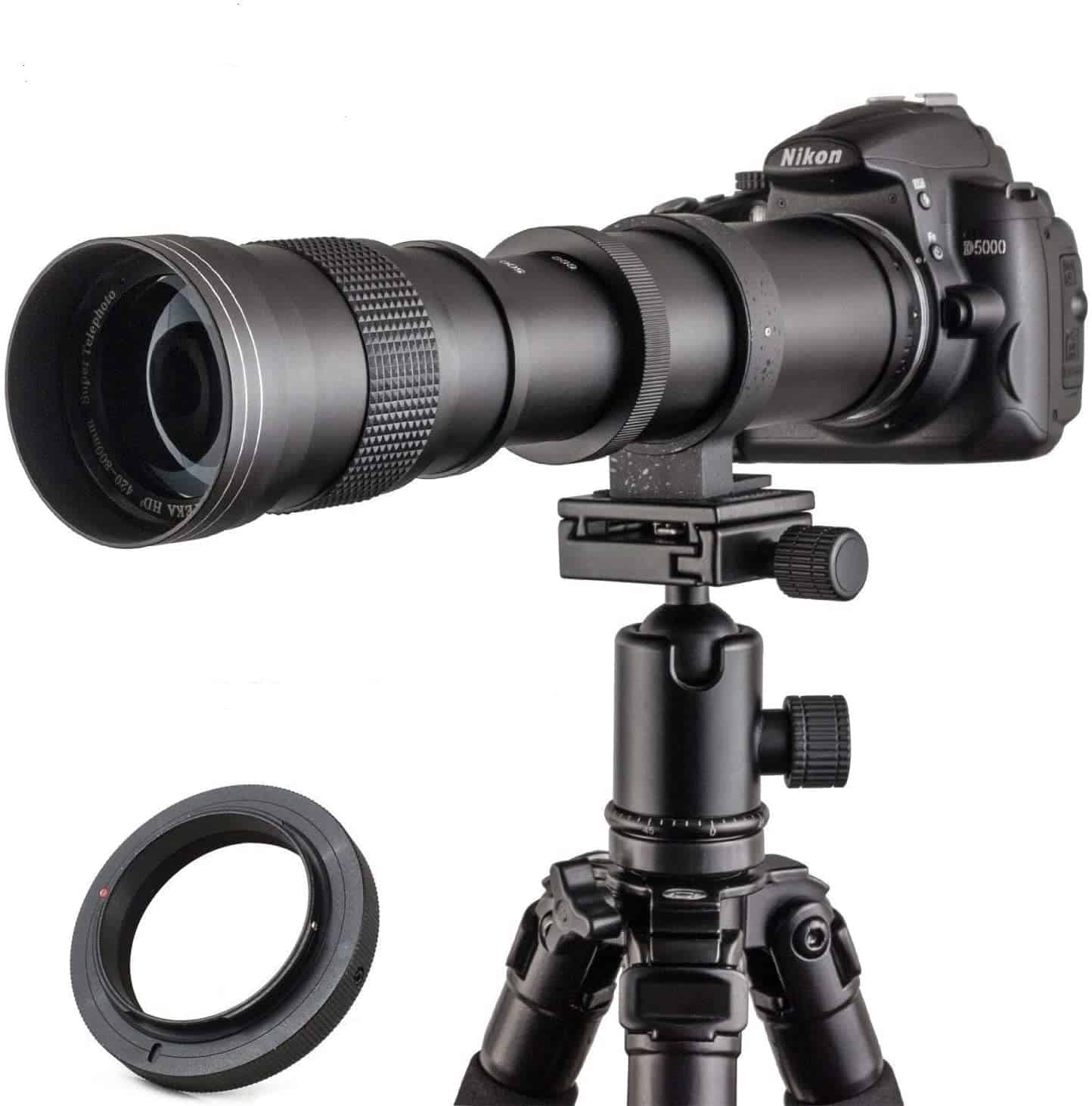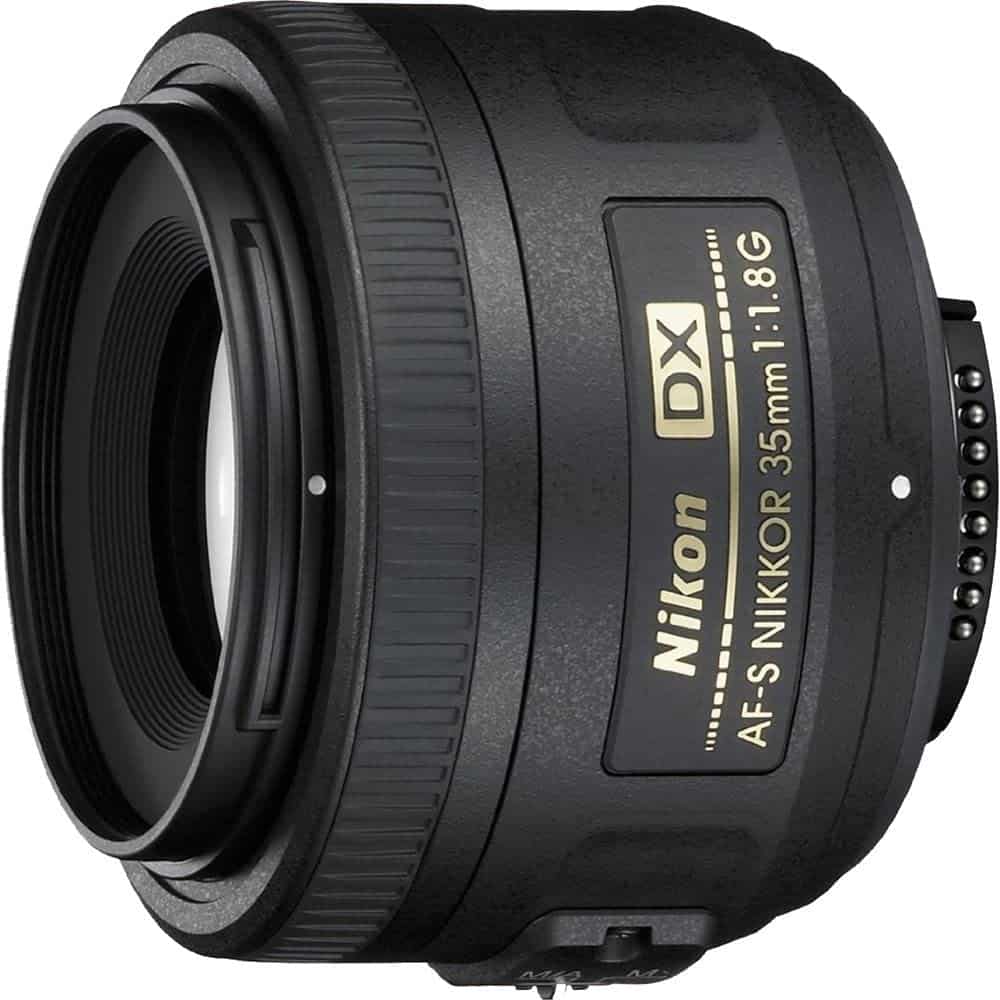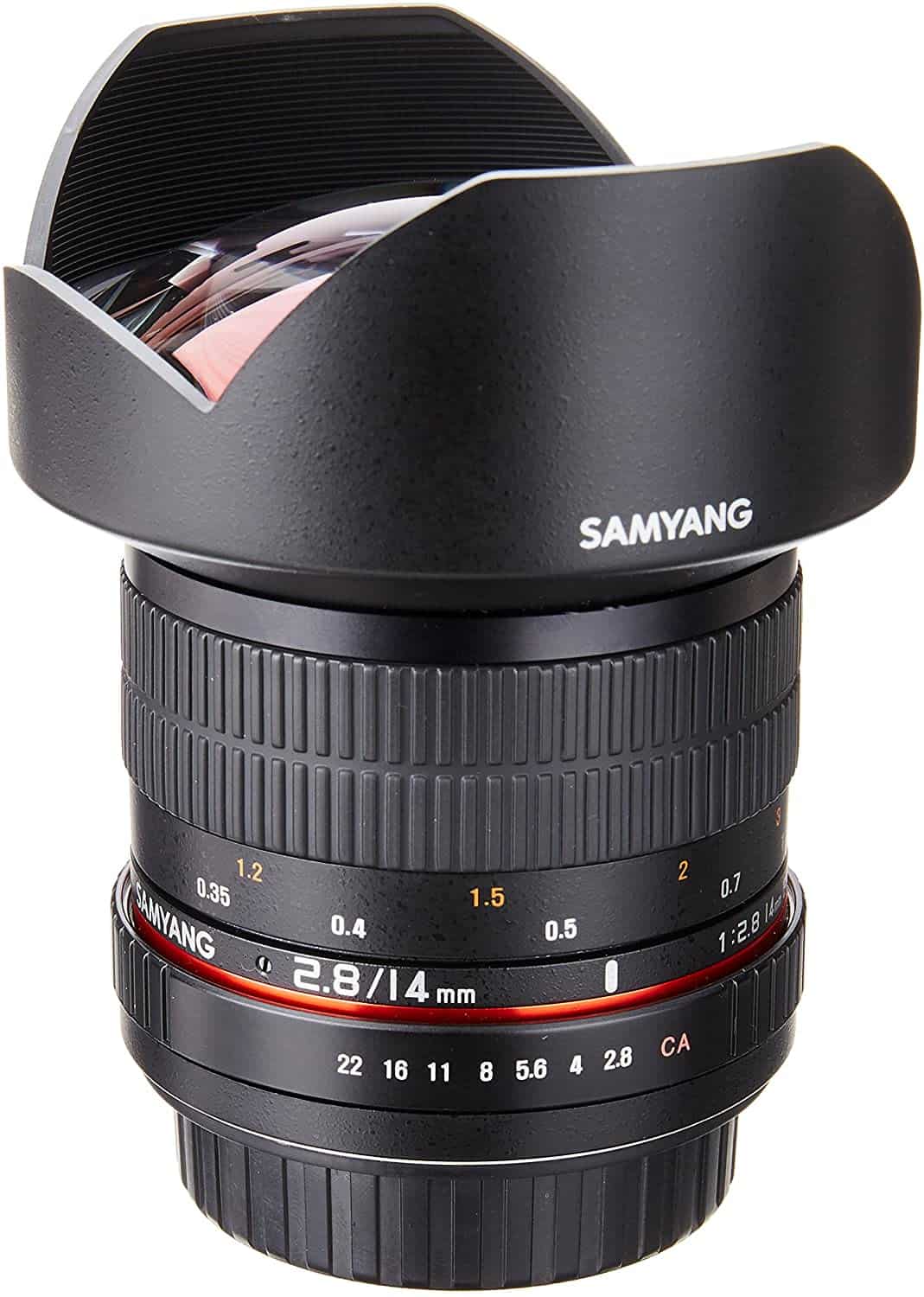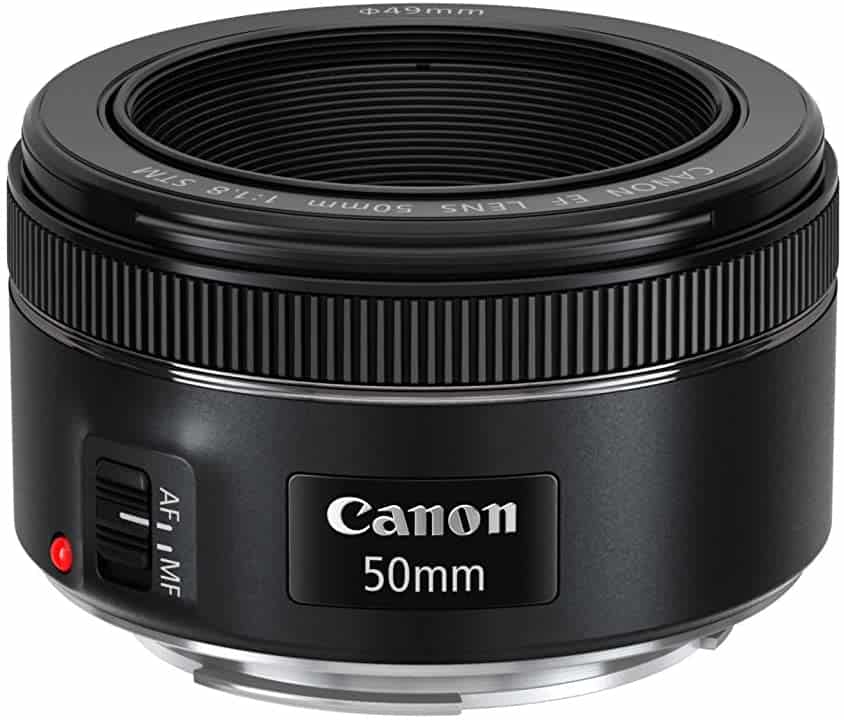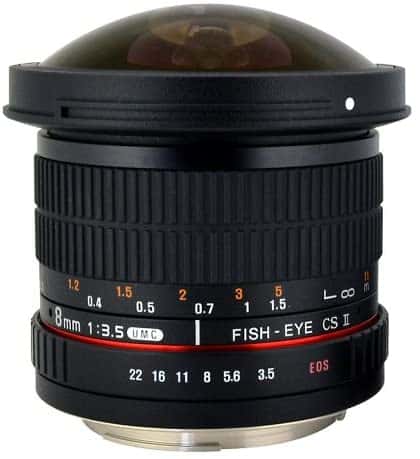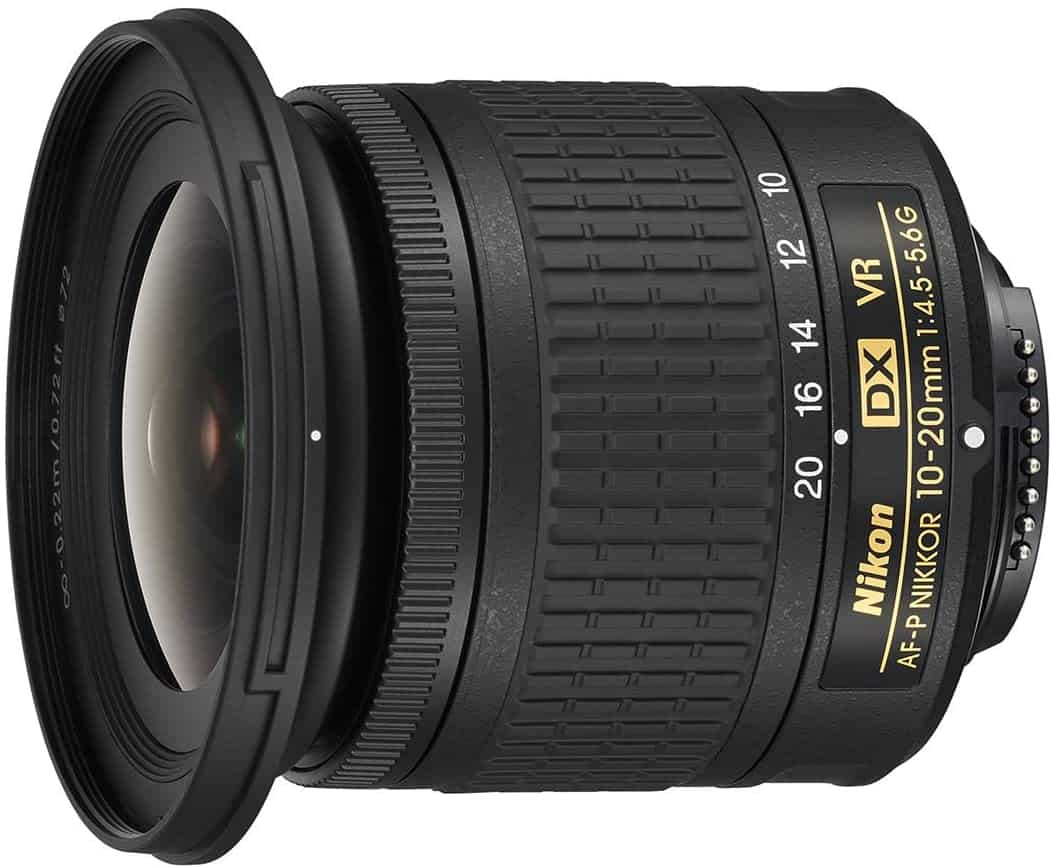Looking for the best lens for astrophotography? You have come to the right place! The worlds that lie beyond our reach are undoubtedly majestic, but in no way, it is possible for every one of us to physically reach out there and see the beauty with our own eyes. So, we take a little help when needed to acquire the necessary resources so that we can take a look at what lies in the skies.
Astrophotography is one of the most exciting and ever-emerging fields in photography; people who possess the skill to capture images should be given a chance to catch and save glimpses of the extra-terrestrial world. Want to capture what you see through your telescope? Well, you would need the best lens for Astrophotography to do so!
Learn about the latest lenses that have helped us view the skies and read about the essential qualities in them.
Let's get started!
Our Overall #1 Rated Pick
This lens is black and has a wide-angle. This 14 mm lens has an angle of view of 90° that can produce dramatic effects in your shots. The lens makes it possible for you to take clear and improved close-up shots because of its minimum focusing distance of 28 cm.
It also consists of a lens hood. It has an aperture range of 2.8 to 22. The maximum diameter of the lens is 87mm. It has a focal length of 14mm. This lens is famous for its amazing dramatic effects. Its specifications are perfect for supporting landscape photography and astrophotography.
The 10 Best Lens for Astrophotography Comparison Chart
Image | Product Name | Ranking | Price |
|---|---|---|---|
1 4.30 | |||
2 4.10 | |||
3 4.30 | |||
4 4.60 | |||
5 4.00 | |||
6 4.70 | |||
7 4.10 | |||
8 4.80 | |||
9 4.30 | |||
10 4.60 |
The 10 Best Lens for Astrophotography Out There
In this section, we review the Top 10 Lens for Astrophotography.
This lens is black and has a wide-angle. This 14 mm lens has an angle of view of 90° that can produce dramatic effects in your shots. The lens makes it possible for you to take clear and improved close-up shots because of its minimum focusing distance of 28 cm.
It also consists of a lens hood. It has an aperture range of 2.8 to 22. The maximum diameter of the lens is 87mm. It has a focal length of 14mm. This lens is famous for its amazing dramatic effects. Its specifications are perfect for supporting landscape photography and astrophotography.
The lens helps to get a good angle of view in DSLR and mirrorless cameras. It produces sharp images even from a distance with the least distortions. The lens has 14 glass elements. It has three high refractive index elements, one aspherical glass element, two ED elements, and one hybrid aspherical element. Moreover, it has six diaphragm blades.
With this lens, you get a design that minimizes reflection and scattering of light. It allows users to work in an atmosphere with lowlights.
PROS
CONS
This lens has a wide-angle of 16 mm. It has a focal length of 16mm and a minimum focusing distance of 0.2 mm. The product has a large aperture that makes it possible to get excellent shots even at night. Moreover, it has a lens hood too that can be removed. It works well with APS-C format DSLR cameras. It allows an angle of view of 79.5°.
The lens has had two aspherical lens elements and one extra-low dispersion element that allows sharp and clear images, even in the dark. It also has a UMC lens coating that helps to reduce flare. The focusing is very smooth and sharp and is very suitable for professional astrophotography.
The lens consists of eight rounded blades that are perfect for portraits. The lens allows more light to pass through and hence creates sharp images. It has a very close focusing ability that enables very sharp out of focus background.
PROS
CONS
The Altura lens has a metal lens. They have a hybrid aspherical element that will promote wide-angle and help you to get wide-angle. It also has multi-layer coatings to ensure improved image quality. The multi-layer coating also reduces flares. The lens has removable hoods and manual focus.
It has manual aperture control. The aperture has six diaphragm blades and has an aperture range from f/3 to f/22. The package also has a case to store it to prevent damage.
The lens has a focal length of 8 mm. All these specifications are very suitable to capture wide pictures of the sky at night. It also supports photography in the dark and produces sharp and clear images that have zero distortion.
The price is also very reasonable as compared to the quality you get. Focusing on wide views may be difficult. Its storage case makes it easy for you to take it anywhere in a secure way.
PROS
CONS
This lens has features that support wide-angled portraits. It helps to take amazing pictures, even in low lights. It has three aspheric lens elements that help to take clear and sharp pictures that are free of distortion and flares. Three aspherical elements include one large-diameter aspherical element and two ultra-low dispersion elements.
The lens is compatible with all Canon cameras and multiple other cameras too. It has a maximum aperture of f/4 that helps to click clear pictures with a continuous zoom range. All these features help to eliminate the chromatic aberrations.
The chlorine coating on the lens further helps to remove flares. It has a Canon USA Warranty. The aperture range is f/4 to f/22. It also has a USM AF motor, which is for internal focusing. They have a nine-blade aperture.
The lens is water and dust resistance, too, which maximizes its efficiency. The package includes lens, bag and camera insert, tripod stand with a pistol grip, a hardshell case, an accessory kit, and three sizes lens pouch.
PROS
CONS
This lens is manual and has a Japanese design. This lens makes it possible for you to capture distant objects. It produces a sharp and distortion-free image of distant objects. This lens is highly suitable for wildlife photography along with astrophotography. It has optical glasses that minimizes the distortion and flare in the images.
Furthermore, the four elements, ultra coating and lens hood, also make it easy to capture distortion-free images. All these features put the bright colors and dramatic effects on the pictures. It also has an integrated zoom lock that will maintain the zoom setting while shooting without causing any kind of disturbance.
The package contains a Telephoto lens, Front cap, Rear Cap, Lens bag, adapter ring, and a leather carrying bag. The issue of storage is also resolved with the help of the storing case.
PROS
CONS
This f/1.8 lens will help you to capture natural shots even in the dark. It is perfect for taking with you on your travels. As it has a maximum angle of view of 50mm, it will make it easy for you to capture natural sceneries in wide-angle.
It has aspherical lens elements that will eliminate distortions and flares. The Super Integrated coating makes it possible to capture an image in its natural and effective colors. It has a 7 blade diaphragm that makes out of focus objects look very natural.
It is certified and has a 90 days warranty that ensures its durability. This lens has an amazing close focusing that differentiates the object in focus and out of focus very sharply. Its maximum aperture of f/1.8 makes shots in low lights possible.
This lens has a focal length that offers a picture angle similar to the normal human eye. This feature makes this lens unique. The light transmission efficiency of this lens produces sharp images that are free of chromatic aberration, distortion, and flares. Moreover, Silent Wave Motor enables sharp autofocus.
PROS
CONS
This lens has an ultra-wide-angle that enables full-frame views in it. It has a minimum focusing distance of 0.9 feet that makes its focusing efficiency reliable. The design is excellent, and the great features help in taking sharp and clear shots. It has a built-in petal-shaped hood that can be removed according to desire and requirement.
It has a multi-layer coating that helps reduce flares. The lens is not zoomable. It has the closest focus distance of 10.8 inches. This lens has a design that enables dramatic effect and clear colors in images.
The lens works both with mirrorless cameras and DSLR. It has 14 elements that can focus on a close distance of 0.28mm to produce sharp images. It uses one hybrid aspherical element, three high refractive index elements, and one aspherical glass element. It has an aperture range of f2.8 to f22 and six diaphragm blades. The lens has a UMC coating that reduces flares.
PROS
CONS
This lens has a focal length of 50 mm and a maximum aperture of f/1.8. It has a 40º horizontal, 27º vertical, and 46º diagonal angle of view. The maximum magnification power is 2.1x, whereas it has a minimum focusing distance of 1.15 feet.
The modern and updated features help to get excellent still and video shots with maximum sharpness. An effective focal length of 80mm makes it more unique in its nature. It has six elements in five groups that add to its efficiency.
The wide aperture allows more light as compared to the ordinary ones. It helps in taking a sharp and clear image with the least blurry effect. These features put the effect the same as the human eye in the shots. It is very portable and handy because of its lightweight and compact size.
This lens helps you to capture excellent videos minimizing the interfering noise. It comes at a very affordable price. Its filter size is 49 mm.
PROS
CONS
If you want sharp pictures with the least blurry effect, you should get this lens. It has a minimum focusing distance of 1 feet. This lens has an advanced feature of auto metering with your camera because of the presence of auto aperture and auto exposure chip.
This lens has improved HD optics that will help to capture sharp and clear pictures. However, the lens is not zoomable. It has a removable hood that can be removed according to the requirement. Its 167º will allow a dramatic effect to your picture.
The hybrid aspherical element and multi-layer coating will allow sharp images with the least distortions. The lens has an aperture range of F3.5 to F23. It has six diaphragm blades. The Ultra multi-coating adds to the sharpness of the image.
It has a maximum diameter of 2.95," i.e., 75 mm. This is a manual lens, but you do not need to work much to set the focus. With a few test shots, you can set the focus and stay consistent with that.
PROS
CONS
This lens has an extra-wide angle that helps you to get landscape shots of the night sky. Its design is durable and long-lasting. It is very lightweight and portable. You can take it with you anywhere you want. The lens has an angle of view of 109º to 70º.
This lens delivers sharp and clear photos, even in a dark and low light atmosphere. Its autofocus motor helps you to shoot videos with excellent results and without any distortions. The lens has a vibration reduction image stabilization feature that promotes sharp images with no chromatic aberrations.
It has a focal length ranging from 10 mm to 20 mm. The lens has plastic mount rings. There are extra operation buttons, i.e., everything can be operated with the help of your camera buttons. Moreover, it has an autofocusing motor that will not disturb your videos because of the vibration reduction feature.
PROS
CONS
Buying Guide
When we purchase a product with our hard-earned money, it becomes a part of us, especially when we talk about such an intimate field, such as astrophotography. The professionals in the house must agree then there are several critical aspects that a camera lens should be judged upon. It is not just about the lens and its adequacy; it is more about the personal experience it creates for the person holding the camera, looking at the night sky.
If you are ever so passionate about buying the best lens for astrophotography that will relieve you of the boundaries of a simple lens, then read the buying guide to understand the features better to be considered before breaking out your wallet.
About Astrophotography
For the longest time, the only people who were able to have a peek at the details of a truly starry sky were the ones who held a telescope and spent hours finding the right spot from their homes or just the astrophysicists whose entire life was those stars.
Now, with the help of technology, and some great visionaries, there has emerged a possibility to view and capture the beauty of space with just the help of an additional lens to your traditional DSLR. In order to understand the lens more deeply and truly appreciate its kinks, read the buying below. It will also help you a lot in identifying the right lens that will be able to capture the world through your eye.
The following specs were selected after searching through detailed articles and thorough examination of Lenses required for astrophotography.
Let's get started!
Focusing Distance
The minimum distance between the object being captured and the focal plane that lies way before the camera lens is the focusing distance. If the object lies closer to the lens than its determining focal distance, then it would be impossible for the camera to process a more precise image.
This focusing distance determines the depth of the field in a photograph, which basically means the area that is sharp and clear. The laws of optics and that of light physics validate this feature. In order to capture the perfect image by tampering with this aspect is to focus your lens on one of the brightest appearing stars and use its light to illuminate your field and capture the perfect image.
Diameter
The diameter of the lens determines the number of light rays that are allowed to enter the lens and create a picture. The resolution of the picture quality is a matter of pixels the camera can capture.
But in reality, there is so much more to it, such as the diameter of the lens. The higher the number of light rays the lens brings in, the higher will be the resolution, and this fact is additional to the pixels. In reality, all of these components, such as the focal length, focusing distance, and the diameter, work together to produce the best quality picture.
Focal length
The focal length is different from the focusing distance as it is determined by the millimeter numbers on your lens and can be subjected to change within a range. It determines how much your lens will be able to magnify a view and quickly zoom in to clearly capture the image maintaining the integrity and clarity of the picture.
If you want to buy a lens for the sole purpose of astrophotography, then you must buy one that has a more extended range of focal lengths. But if you are an all-rounder, then you probably should buy a lens with a medium range of focal length.
Angle
The angle of view of the lens of the camera determines how much of the scene will be stored in the camera and its ability to capture the distance views. The larger the angle of the lens is, the more significant the focal length is going to be, and as we have explained earlier, a higher focal length accounts for a better-quality picture of faraway objects, which is undoubtedly necessary for astrophotography.
Compatibility
Any additional lens that you buy to pursue one of the many fields of photography should be compatible with your existing model of camera. It can become excessively expensive if you have to buy an entirely new system so that it will be compatible with the lens you purchased for astrophotography.
There are many lenses out there that have been made by neutral companies that do not necessarily produce cameras as well, and thus they are able to make lenses compatible with every brand out there. But if you still cannot find a lens that is compatible with your camera, do check the company's own products, you may be able to find something to start from.
Manual Focus
The feature that lets you adjust the focus of the lens according to your desirability is the one that has the ability to be moved around in the focal length range. Not all of the lenses offer this extra feature, but it sure does help customize the picture according to the photographer's needs.
This aspect enables you to capture the image with the focus as you deem fit, and thus at the point where you have identified the view to be captured becomes one of the essential aspects. If you don't have to pay up a lot to get a lens with changeable focus, then do put it as a preference.
Protective case
This goes out for all the clumsy people out there, who cannot keep an expensive product safe without the extra protection. And even if we consider our everyday life, we get a little clumsy as well. Sometimes things do not go our way, and one thing slips and takes everything with it.
During traveling, everything is cramped up in a bag and gets thrown away a lot; this could damage the lens. Since all of these gadgets do come with a hefty price tag, they are considered valuables. So, a protective case specifically made for the lens never hurts but becomes a more significant pro for the whole deal.
Weight
We are talking about additional lenses here that have to be attached to the original camera and thus adds weight to it. If the weight of the device is substantial enough to raise the total weight of the device, then it can become challenging to handle.
Photography requires patience, and a lot of time takes into taking that one perfect shot. And if the device weighs more than the muscles in the hands can handle, then definitely it is going to cause a little bit of discomfort.
Accessories
To increase the value of their products, most companies create packages where they include some props for the whole deal. These accessories can be in any shape and form that actually benefit the original function of the device.
For a camera or a lens, the accompanying accessories can vary from a tripod stand to a protective case or a whole bag with individual protective compartments for every part of your device.
If you already have the accessories, then you can skip the deal, but if you were looking for them as well then, it's your jackpot because, in deals like these, you get the products at a lower price than buying everything individually.
Flare
Most of the quality devices have distinct layers of coating on their lenses that help minimize the flare that can otherwise play with the image quality. The multiple layers account for a better function; the less these coatings are, the more flare will object your image.
Image Stabilization
A bunch of techniques are used in the new tech cameras that help stabilize the image when your hands wobble, or the camera doesn't stay still. When anything changes the balance like a simple hand tilt, the angle of the lens is shifted to produce a still image and not a rotated or a blurry one.
It really does help build a game in the real photography world, but once you become a pro, you will not be relying on it as much.
Customer Service
This aspect made our list because we feel the need to express the importance of the notion that customers come first. When someone spends their valuable money on a product, they deserve good customer service in case they face any difficulty.
A simple guarantee in the shape of a card that signifies that if the device malfunctions, the company will repair it is helpful. This increases the trust of a person in an otherwise menial object and proves that the device is durable as the company is willing to spend money on it if it ever malfunctions.
FAQs
What is optical image stabilization?
Optical Image Stabilization (OIS) is a general term that explains the automatically adjusting response of the angle of the lens to a sudden hand tilt or wobble that could destroy the image otherwise.
What is the difference between focal length and focusing distance?
The focal length determines how much your lens will be able to magnify a view and easily zoom in to clearly capture the image while maintaining the integrity and clarity of the image. Focusing distance is the minimum distance required for the camera to be able to capture an image placed near to it clearly.
What are chromatic aberrations?
Chromatic aberrations happen when the lens is unable to focus on the different wavelengths of colors being subjected to it, and as a result, the image comes out distorted. It can be easily relieved by using a lower and higher quality glass lens in addition to each other; this method is often applied to the additional lenses to prevent chromatic aberration.
Final Words
The distance that science has helped us cover is remarkable. To be able to view the objects so far away that we cannot even fathom ever to reach those distances is truly fascinating.
With the help of just an additional lens, the worlds hidden in the skies seem so close. These are indeed the wonders of the universe, and to be able to capture its beauty is phenomenal. Buy your own best lens for astrophotography and get ready to embark on this fantastic journey.
Happy Stargazing, Folks!


